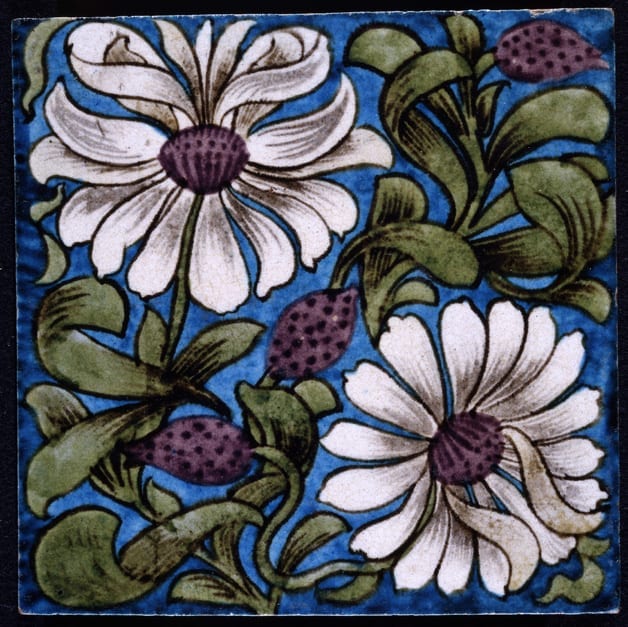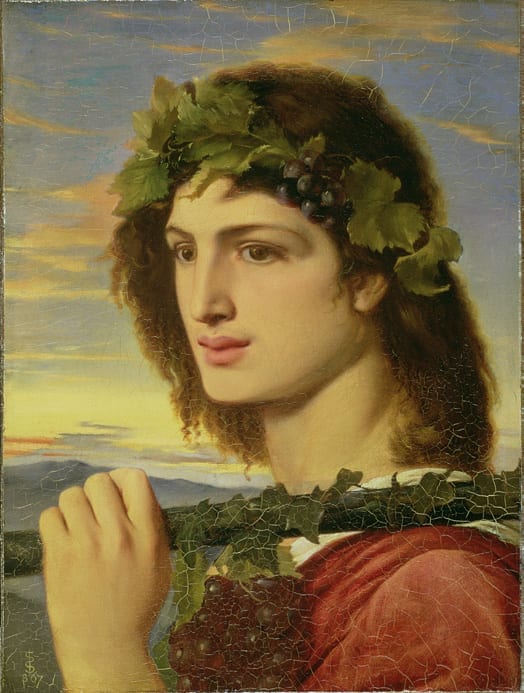An ambitious exhibition, “Victorian Radicals: From the Pre-Raphaelites to the Arts & Crafts Movement,” opened Thursday at Yale Center for British Art.
The show encompasses three generations of artists over the course of fifty years with drawings, paintings and objets d’art on loan from Birmingham Museum and Art Gallery, which houses the most comprehensive collection of Pre-Raphaelite art in the world. The presentation is elegant and is divided into four parts: The First Industrial Nation; The Pre-Raphaelite Avant-Garde; Secular Ministry; and Utopias for a New Century.
In the mid-19th century, the Pre-Raphaelite Brotherhood, kickstarted with philosophical support from eminent critic John Ruskin, rebelled against the Royal Academy. Dante Gabriel Rossetti, John Everett Millais and William Holman Hunt, founders of the Brotherhood, looked to the example of pre-Renaissance art, with the goals of working from life and critiquing contemporary culture. Notes accompanying the show credit the Brotherhood “among the first avant-garde movements in the history of art.”
Paintings and drawings in the show are interspersed with glassware, metalwork, jewelry, dresses and fabric designs by William Morris. Thanks to Morris, the Brotherhood’s influence radiated through interior design and architecture, culminating in the Arts and Crafts movement.

The shared bond was a pushback against the Industrial Revolution. Their subjects included biblical and spiritual themes, orientalism and classical literature. Several works explore femme fatale mythology. Simeon Solomon’s Bacchus modestly expresses homoeroticism. Bohemianism was mandatory. Rossetti buried a volume of poetry with his young wife (artist and muse Elizabeth Siddal) when she died, and years later had her dug up so he could retrieve it for publication.
Running through much of the work is a conflict between its quasi-religious mission and the commitment to detailed realism. But 19th-century realism developed without moralizing agendas in such countries as France, Germany and the United States, in works that now appear far less dated.
The moral narratives of the Post-Raphaelites are earnest to a fault and too serious by half. Ford Madox Brown’s Work—the first, smaller version is represented here—is one of the great 19th-century manifestos on behalf of the working class. The gestures struck by street workers have the vivacity of stop-action photographs. Curator Tim Barringer rightly notes that “Each character in the painting demands careful interpretation, as in a Victorian novel.” But visual art possesses assets distinct from those of literature; painting is more than an explanatory device of intellectual concepts. In Work, one is too much aware of the mechanics of the composition, and that is laboriously true for most of the art here.
Two Gentlemen of Verona, by William Holman Hunt, is a hybrid of plein air landscape and figures painted in the studio. Yet the devotion to realism is subverted by the artifice of hallucinogenic color and overwrought gesture. Notwithstanding their symbolic intent, the saturated colors often fare less well on canvas — with clashing blood reds and deep greens –than when adapted to stained glass designs, the forte of Edward Burne-Jones.

Burne-Jones was the most impressive draftsman. Included at Yale is his series of paintings on the Pygmalion story, originally by Ovid, but revisited in a poem by William Morris by 1870. In keeping with much of the Pre-Raphaelite catalogue, the figures meld elements of classicism and romanticism. But the palette is nearly monochromatic, and the figures are conceived with psychological remoteness. Even the final images, in which the sculpted Galatea miraculously comes to life, are achingly dispassionate.
A child prodigy, Millais was the most gifted painter of the lot; his Christ in the House of His Parents and Ophelia (neither in the show) are the best works produced by the movement. The Blind Girl, a highlight of the Yale show, is as heavy-handed thematically as it is sensitively executed. To make sure the point is not missed, the girl wears a sign imploring us to “Pity the Blind.” It was not enough for Henry Wallis’s The Stone Breaker to be exhausted by his work; he has expired in the garish shadows of a setting sun, sacrificed to an industrial imperative.
In looking to the Quattrocento for inspiration, the Pre-Raphaelite Brotherhood largely missed two important components: a grasp of abstraction of form (the essential big shapes upon which detail is constructed), and a gift for specificity in portraiture. The faces of their subjects, from Rossetti’s La Donna della Finestra to Kate Bunce’s Musica and Sidney Meteyard’s Hope Comforting Love in Bondage are dependably square jawed and vacuous. They’re harbingers of 1970s glam androgyny, without propulsive music.
There are pleasures at the exhibition’s margins. Some come in the form of large canvases by the old garde, Charles Eastlake and William Etty, whom Hunt described as “intoxicated with the delight of painting.” This was probably not meant as a compliment, but Etty’s delight is a welcome respite from the abiding sobriety.

Other works of interest are modest in scale, like Rossetti’s pen drawings and Burne-Jones’s The Annunciation. Rossetti’s Study for the Head of the Young Woman (ca. 1856) foretells James Whistler’s etchings of the following decade. There’s a small landscape by John William Inchbold, whose A Study, in March (not in show), is the most compelling pure landscape painted under the PRB banner. Later paintings by Joseph Southall and Arthur Gaskin forego blatant commentary and get far closer to the look of Medieval art.
In “Victorian Radicals,” the Pre-Raphaelite rebellion may be appreciated in a scope rarely, if ever, offered in this country. Go see it. Besides, an occasional retreat into the Victorian age provides respite from the current madness.
“Victorian Radicals: From the Pre-Raphaelites to the Arts and Crafts Movement,” Thursday, February 13, 2020 through Sunday, May 10, 2020.
Yale Center for British Art — 1080 Chapel St, New Haven, CT 06510
Admission is free.


